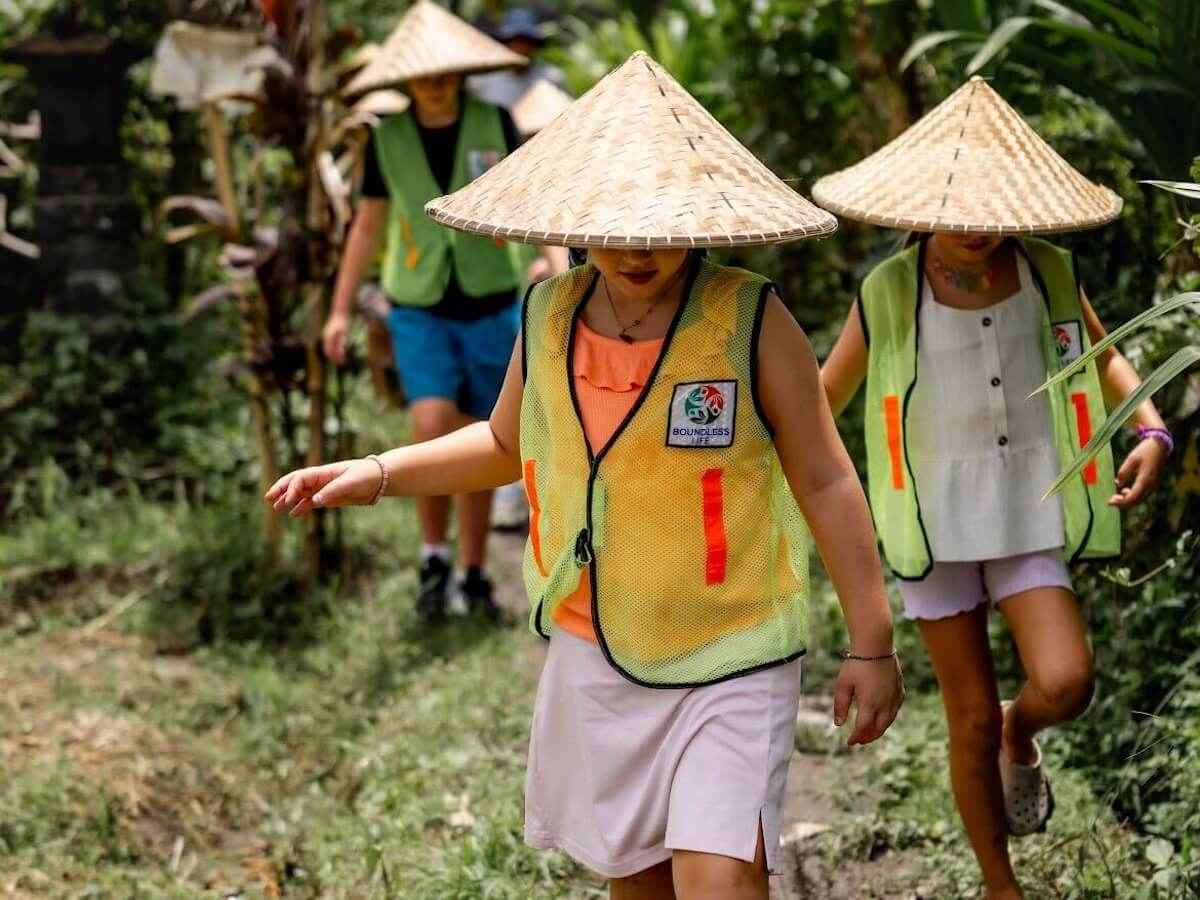
What Is Worldschooling, Really?
“Worldschooling” has become a buzzword in alternative education circles – and for good reason. As the number of travel families increase, these bold thinkers and globetrotters are looking for new ways to educate their children.
Simply put, worldschooling taps into the endless learning experiences that the big wide world offers.
Instead of a child’s learning being confined to a classroom, the world becomes the classroom. Lessons are drawn from experiences, places, people and cultures around the globe. It’s learning history by wandering ancient ruins, practicing math by budgeting at a local market, or studying marine biology while participating in a beach cleanup or turtle conservation center.
In a nut shell – it’s born from a love of travel and a belief that children (and parents) learn best by engaging with the world.
This article digs deeper into what worldschooling is, what it isn’t, who started it and what it might begin to look like in the future. This article is about understanding worldschooling BUT also about reimagining worldschooling!
How Do Worldschoolers Define It?
If you’re struggling to get a handle on what worldschooling means in practice, that’s probably because it means different things to different people.
This month we reached out to Jenny Lynn of Travelynn Family – travel blogger, currently worldschooling with her family in Malaysia – to get her opinion on what worldschooling means to them.
This is what she had to say…
“World schooling can be, taking your kids out of school and traveling long term with them. But equally rewarding are those families who use their two-week or three-week holidays to go to Costa Rica or Cambodia… I don't think there should be a time limit on what world schooling is”.
And we think she said it perfectly here too…
“Do we have to define what this type of schooling is? I just think any schooling where the kid is getting out of their bubble is great”.
We tend to agree! At its heart, worldschooling is about stepping outside of the familiar bubble. It’s any form of schooling where children get out into the world and learn from it.
Plan your adventure
Or read more 👇
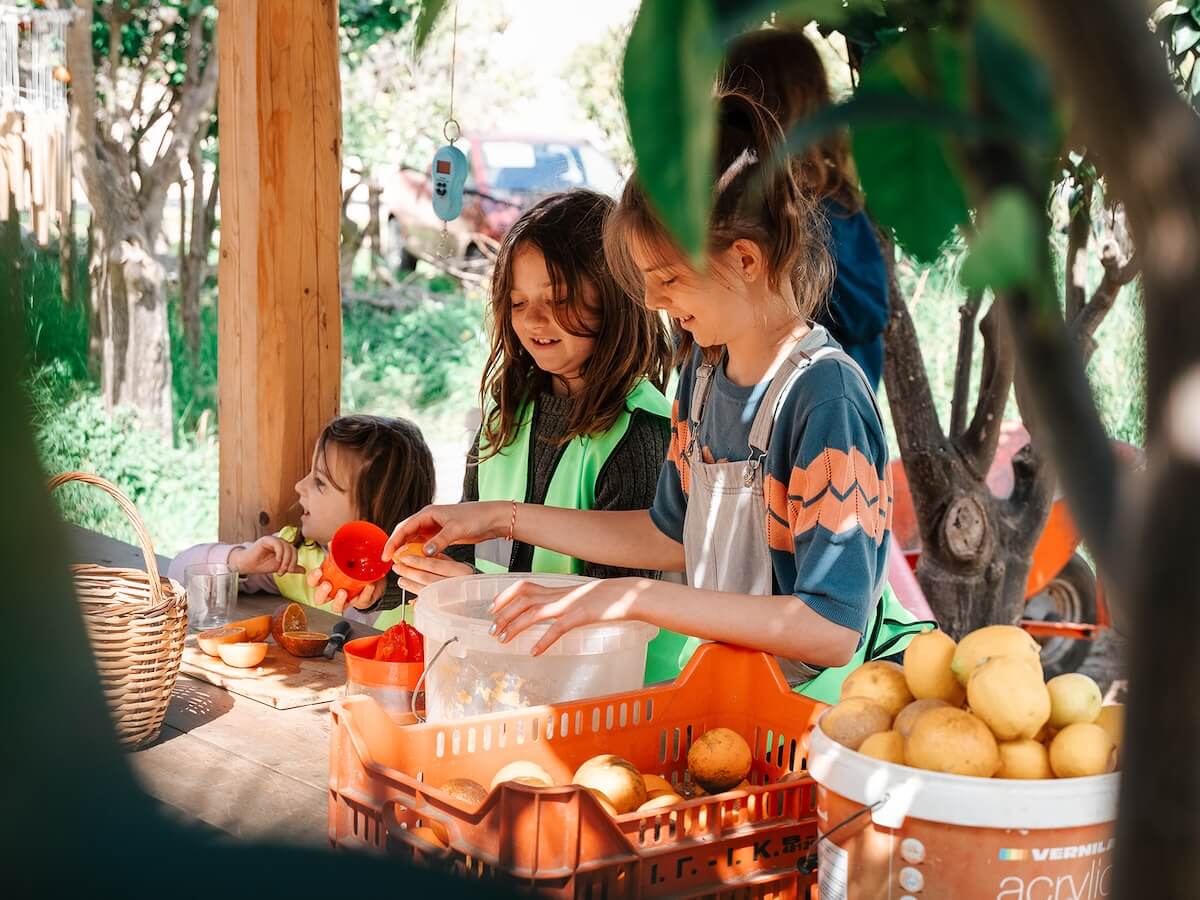
What Worldschooling Isn’t
Taking a geography class or watching a travel documentary, while valuable, isn’t the same as worldschooling. Neither is a resort vacation where you never leave the hotel.
“A geography lesson in class isn't world schooling... you only truly understand about the world when you leave the classroom,” Jenny emphasizes.
And flying to a foreign country only to eat the same food and stay in a tourist bubble isn’t the idea either. The key distinction is active engagement with the local environment and culture.
Saying hola and gracias at a Spanish resort is nice – but worldschooling would encourage going out to explore the nearby town, learning about local traditions, maybe even picking up some Spanish phrases from neighbors or guides in an authentic setting. It’s the difference between observing the world from a safe distance and jumping in to participate.
Worldschooling firmly advocates the latter.

The Pioneers: How Worldschooling Began
Like any grassroots movement, worldschooling started with a few brave families who decided to rewrite the rulebook.
In the early 2010s (and even before the term “worldschooling” was widely used), certain adventurous parents packed up their lives, grabbed their passports, and took their children out into the big wide world – school enrollment forms be damned.
These pioneers didn’t necessarily set out to start a trend; many just had an earnest belief that travel could be truly educational, and that “real life” experiences would benefit their children more than staying put.
One of the earliest families to proudly define themselves as worldschoolers is Alyson Long’s World Travel Family. Back in 2012, Alyson and her husband made a radical choice: they decided to take their two sons out of traditional school in Australia and travel full-time.
Alyson’s blog became a blueprint for countless parents dreaming of a nomadic life with kids. She wrote candidly about the logistics. How do you afford it? What about visas and vaccines? How do you teach math from a camper van? In doing so, she proved that full-time family travel was not only possible but rewarding.
Their level of boldness – selling the house, trading stability for adventure – caught the attention of many of us in the early days. Suddenly, new parents (like some of us at Boundless Life) realized that no, we didn’t have to hang up our backpacking gear just because we had children.
Worldschooling in the Early Days
Alyson and other early adopters had a pretty purist definition of worldschooling. To her, if kids were enrolled in mainstream school, that was mainstream education – you couldn’t cherry-pick the label “worldschool” just because you took a gap year or a summer trip. The original worldschooling ideal was very much a lifestyle, a full-time commitment.
So in the beginning, worldschooling was somewhat radical and exclusive – a clear break from traditional schooling, embraced by a relative few willing to upend their lives.
Then as more families started to join the movement in the mid-2010s, there was sometimes debate about who gets to call themselves worldschoolers. Could you still claim the title if you only traveled during school holidays? What if you enrolled your kids in a local school abroad for a semester – was that still worldschooling or had you “sold out” to the system? The community didn’t always agree.
Many of the OG worldschooler and pioneers saw worldschooling as being incompatible with traditional school. You were either all-in or you weren’t really worldschooling. However as time went on, perspectives naturally shifted and changed.
Even Alyson, passionate as she was, later struck a more moderate tone: “Every homeschooler is different, every un-schooler is different, every child and family is different. There is no one fixed right way to homeschool or worldschool and that is absolutely fine. Education should never be one-size-fits-all.”
That acknowledgment – that flexibility is okay – came as worldschooling started growing beyond just a handful of maverick families.
Ready to find out more?
Or continue reading👇

A New Wave of Traveling Families
The Bucket List Family
As we moved later into the decade, worldschooling got a huge visibility boost from social media. Suddenly, you didn’t have to stumble upon a niche blog to learn that families were traveling long-term; you could see it play out on YouTube or Instagram. Perhaps no family captured the family travel dreams more than The Bucket List Family.
Garrett and Jessica Gee, aka the Bucket List Family, burst onto the scene in August 2015 when they famously sold everything and set off to travel the world with their two toddlers.
They weren’t the first family to do it, but they were uniquely poised to capture hearts and imaginations through charismatic weekly YouTube videos and sunny Instagram posts. They coined themselves “Family Travel Journalists” and took their followers along on every adventure, from swimming with humpback whales in Tonga to riding camels in Morocco.
The Bucket List Family showed a more aspirational (also ‘Instagrammable’) side of worldschooling. In just 3 years, they visited 65 different countries – an incredible pace that had many of us living vicariously through them.
When Jessica gave birth to their third child during their travels, it was the ultimate testament to their “no excuses” philosophy – if they could welcome a newborn while living out of suitcases, what excuse did the rest of us have not to chase our travel dreams?
The Bucket List Family amassed millions of followers, many inspired to attempt extended travel or at least contemplate a gap year abroad with their children. Suddenly, taking your kids out of school to travel didn’t seem so outlandish – it seemed fun, enriching, even socially admired.
TraveLynn Family
Another family who emerged during this new wave is Jenny and Jay Lynn of Travelynn Family, who set out to travel and worldschool with their two young boys around 2018. They spent 2+ years overlanding through Africa and Asia with toddlers.
What makes Jenny’s voice particularly valuable in the worldschooling narrative is how she has helped broaden the definition of worldschooling for a new generation.
For the Lynns, sometimes worldschooling has meant full-time travel and homeschooling on the road. But other times, it means enrolling their kids in a local international school in Malaysia and maximizing every holiday to take trips and learn from the world that way. And you know what? She considers both scenarios valid.
This represents a significant shift in mindset. Worldschooling no longer has to be an all-or-nothing identity. You can be a worldschooler for a summer, or for a year-long sabbatical – whatever fits your family’s circumstances.
Jenny also acknowledges that most worldschooling families blend approaches. Rarely will you find a family that just wings it 100% without any kind of plan or curriculum.
“We do learn through the experiences we have when we travel,” Jenny says of her own boys, “but they also do maths and English when we’ve taken them out of school – we use online learning for that, because you’re not going to learn how to do algebra at the market, are you?”.
It’s a pragmatic approach: you can embrace worldschooling and still ensure your kids are getting the necessary academics. However, there’s no one-size-fits-all formula – each family finds the mix that works for them.
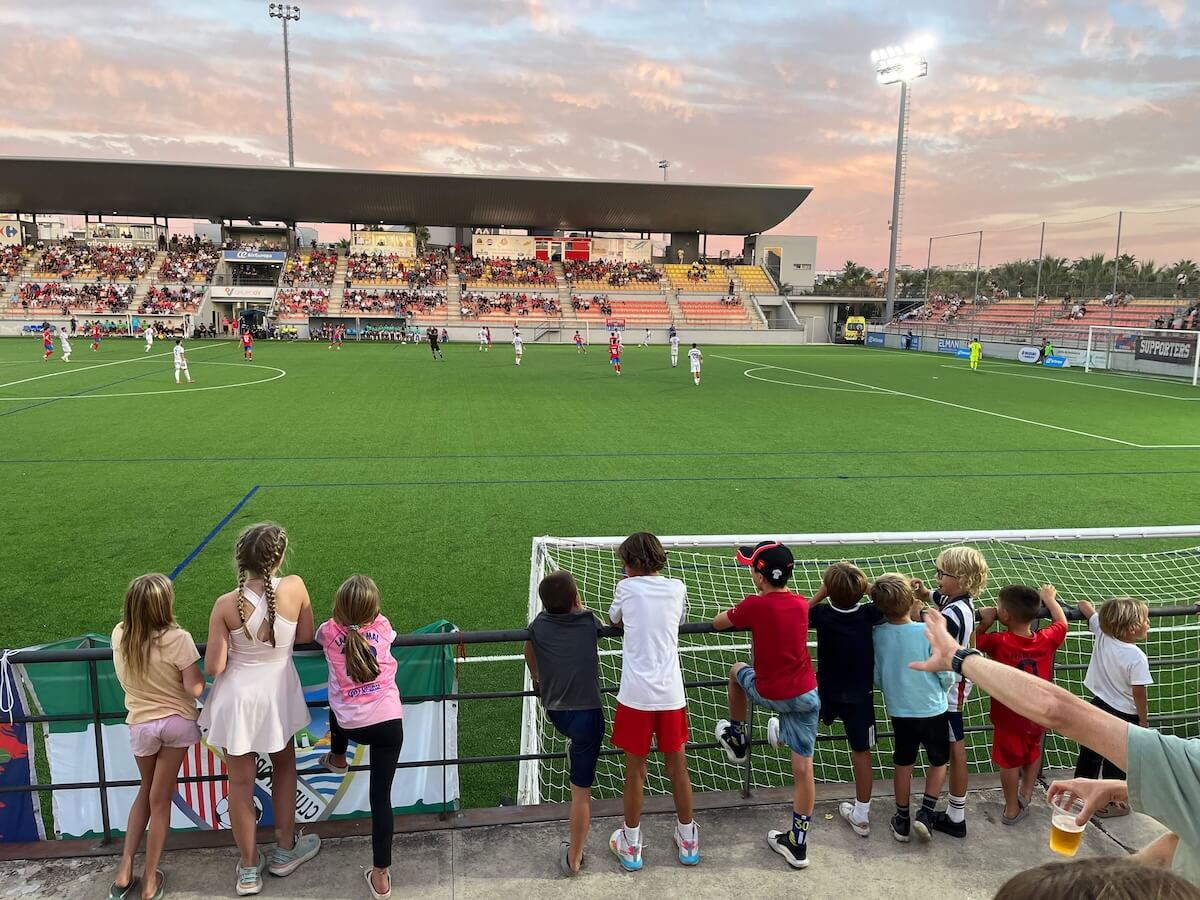
Families Flocking to a World of Possibilities
If worldschooling was once a niche subculture, it’s quickly becoming a global phenomenon. In the past few years especially, we’ve seen exponential growth in the number of families choosing this path – whether full-time or part-time. Several factors have fueled this surge.
The COVID-19 Catalyst
The pandemic upended everyone’s concept of “school.” Suddenly, tens of millions of kids were learning from home via Zoom. At the same time, remote work became more common for parents. The result? An explosion in homeschooling and alternative schooling.
In fact, worldschooling has “exploded so much in popularity since 2020” that even the U.S. Census Bureau noted homeschooling doubled in a single school year. In spring 2020 about 5.4% of U.S. households were homeschooling; by fall 2020 that jumped to 11.1% – effectively a 100% increase.
And this interest hasn’t just faded away. Even as schools reopened, a significant chunk of parents didn’t simply return to the old normal. Homeschoolers in the U.S. have doubled since 2019 and are holding steady as families remain “increasingly interested in non-traditional learning options”.
This broad shift has opened the door for concepts like worldschooling to gain mainstream traction. Parents who might never have considered pulling their kids from school started to ask, “What if we did something different?”
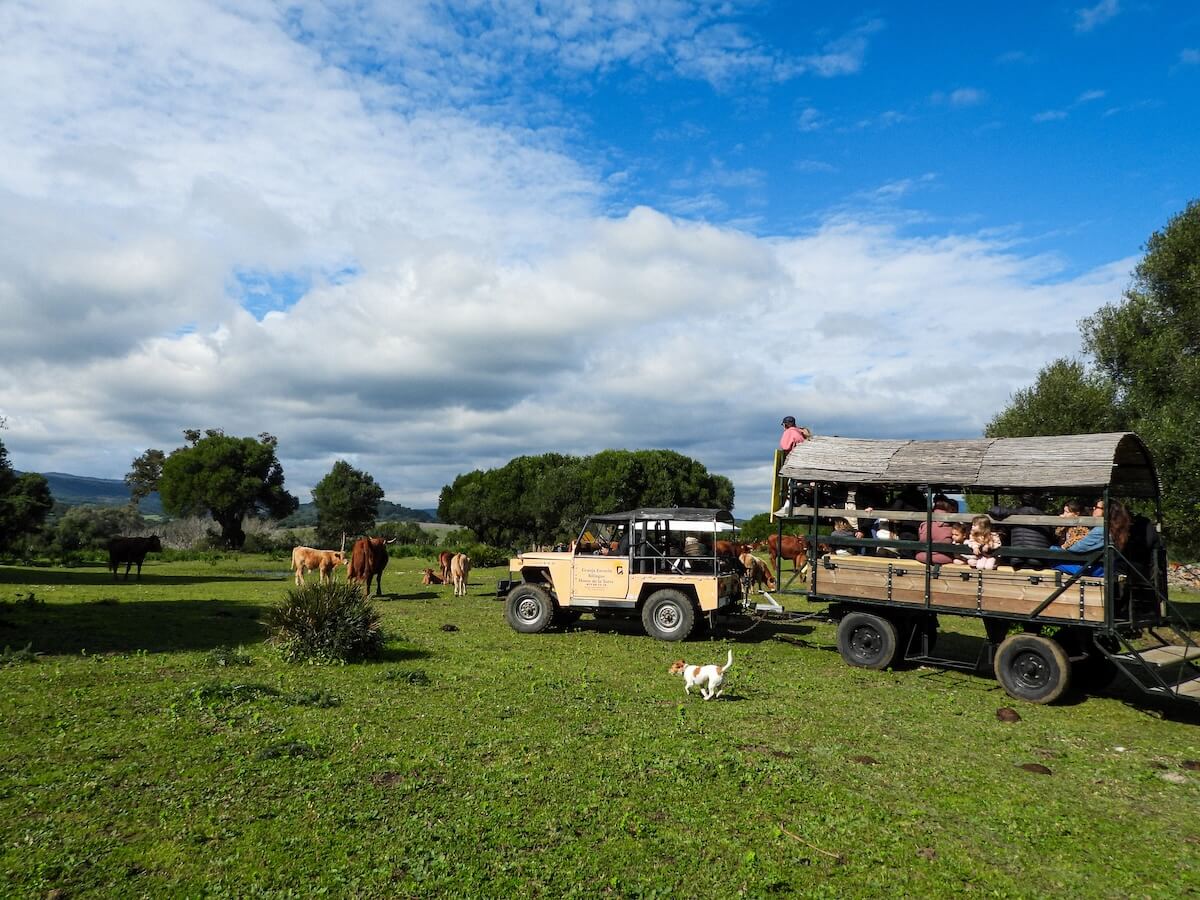
Increasing Digital Nomads with Kids
Remote work’s normalization means thousands of parents can now work from anywhere. Pre-2020, the archetype of a digital nomad was a single 20-something with a laptop. But today there’s a growing sub-community of digital nomad families.
In fact, recent estimates suggest 1.5 million nomadic families are now traveling full-time worldwide – many of them embracing worldschooling to educate their children on the road. It’s no coincidence that worldschooling hubs are popping up in destinations around the world.
With mom and dad logging in from a coworking space and the kids doing an online class before an afternoon surf lesson, the whole family is free to roam without cutting ties to jobs or schooling.
The World Economic Forum projects that by 2030, there will be 92 million global digital jobs that could be done remotely – a trend that will likely produce even more traveling families in the coming decade.
Seeking Something More
There’s a palpable dissatisfaction with the status quo in many countries’ education systems. Ask parents in the UK, USA, Canada, Australia, New Zealand – you’ll hear common concerns: overly standardized curricula, high-pressure testing, inadequate focus on life skills, or simply a feeling that traditional schools aren’t adapting to a changing world.
Consequently many families are taking matters into their own hands. Jenny notes -
“I think there's a lot of frustration with state education systems... So parents are saying, let's take things into our own hands.”
“More and more families... are adopting world schooling. I think we're going to see a huge rise in worldschooling families.”
And the numbers back her up: A major Facebook group for worldschoolers now boasts over 73,000 members connecting and sharing advice. These are parents actively planning or already living a traveling lifestyle with their kids. Likewise, the proliferation of family travel blogs, YouTube channels, and forums in recent years points to an ever-expanding community. Worldschooling is no longer solely for the alternative thinkers, it’s a movement with gaining momentum.
Start planning your trip
Or read on👇

Communities and Hubs
As the worldschooling ranks have swelled, families are banding together in new ways. In the past, one downside of long-term travel was potential isolation – children missing friends, parents missing adult camaraderie.
Today, that gap is closing. “Community plays a really vital role,” Jenny notes. While her family was content as a tight “traveling pod” of four, she acknowledges that many worldschooling families rely on meet-ups or group travel to keep social needs met: “Often WhatsApp groups or the Worldschooling Facebook group… There are pop-up hubs around the world where you can join other communities. For some families these are an absolute lifeline”.
Indeed, since 2020, worldschooling hubs have been sprouting globally. These hubs are like temporary learning communities where multiple traveling families come together in one place for a few weeks or months at a time. According to one report, about a dozen worldschooling hubs have appeared in the last three years alone, in countries ranging from Spain, Portugal and Morocco to Thailand, Peru, and Egypt.
In short, worldschooling doesn’t have to mean going it alone – an entire patchwork of global “villages” is arising to support these wandering learners.
Increase in Slow Travel
Another trend shaping the movement is a shift toward slow travel. Early on, some families (especially those on limited sabbaticals) tried to cram in around-the-world trips, hitting dozens of countries in a year. Now, there’s a growing recognition that less can be more.
Families are choosing to spend longer in each place to truly immerse and avoid burnout. “I see more often than not families telling me, ‘We just had to slow down,’” says Jenny. “People aren't doing the big round-the-world trips ticking off as many places as possible”.
Besides being easier on everyone’s energy, slow travel is more budget-friendly and deeper educationally. It’s also eco-friendlier. This mirrors a general trend: families adopting worldschooling are often also striving for a more sustainable and intentional lifestyle.
All of this paints a picture of a movement that’s rapidly maturing. Worldschooling is no longer just a handful of bloggers. But given the continued rise of remote work and the lasting desire for meaningful family experiences, it’s safe to say worldschooling in one form or another is here to stay.
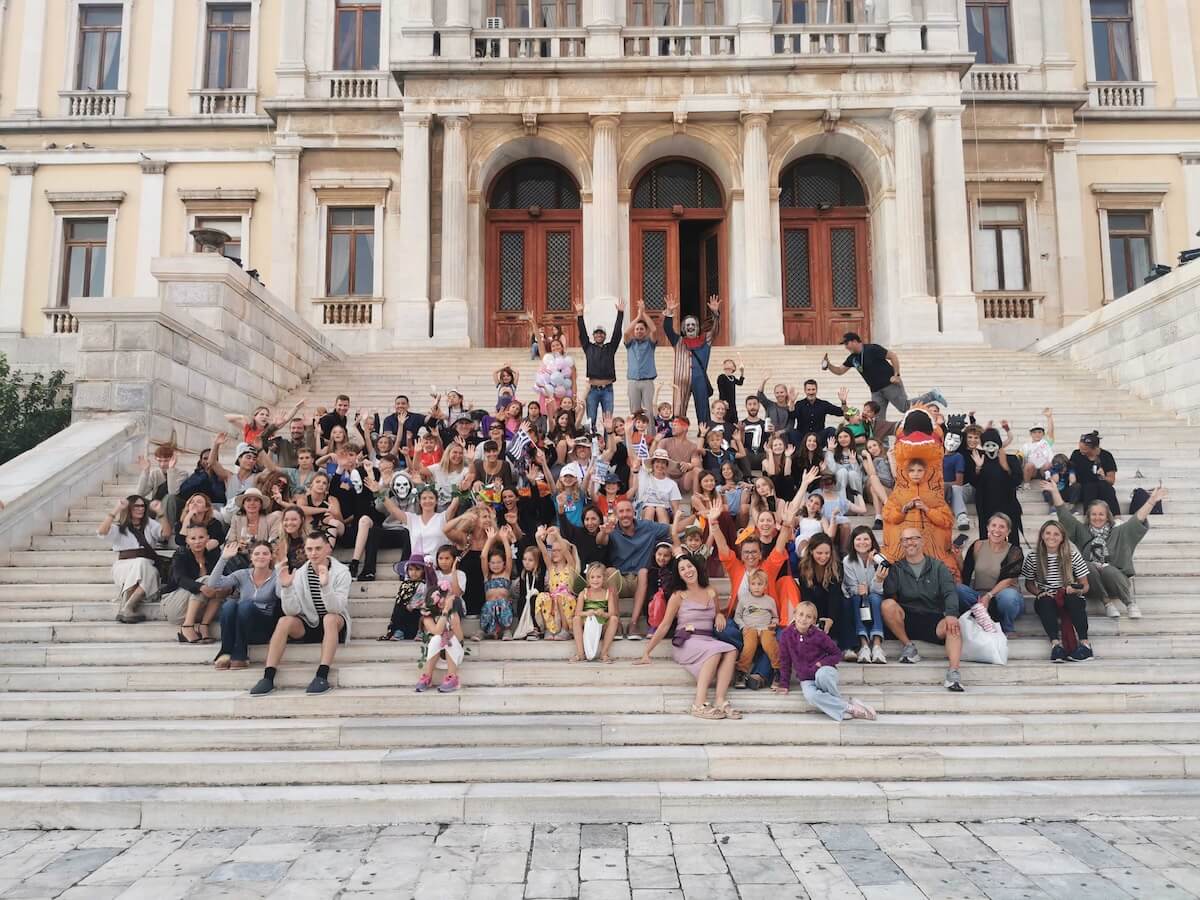
Worldschooling, Reimagined: The Boundless Life Approach
With worldschooling gaining popularity, it was only a matter of time before innovators came along to streamline the experience. Enter Boundless Life – a concept that emerged in 2022 and quickly made waves by offering a turnkey worldschooling lifestyle for families.
The idea was bold: what if you could remove the biggest pain points of traveling with kids (finding housing, organizing schooling, locating a community) and package worldschooling into something almost as convenient as moving to a new neighborhood?
In other words, Boundless Life set out to reimagine worldschooling in a more structured, accessible way.
For many families intrigued by worldschooling, the prospect of planning everything alone – curriculum, accommodations, social outlets – can be overwhelming. This is exactly where Boundless Life comes in.
As Jenny Lynn observes, “Boundless Life is a really good option for families that are new to the concept of worldschooling and who want to travel long-term with their kids, but also just need to schedule a break in their long-term travels so that parents can catch up on work, the kids can have some kind of formal education and they can have the ease of a community around them.”
In short, Boundless Life is worldschooling made easy. You literally just show up in one of their locations, and much of the heavy lifting has been done – a fully furnished home, an education center with teachers, a ready-made cohort of like-minded families, even a coworking space for you to log into your remote job.
Getaways, Cohorts & Gap Years
In the first year since its inception, Boundless Life has established these communities in seven, soon to be eight, destinations: Portugal, Greece, Italy, Spain, Montenegro, Bali, Uruguay, with Japan on the way.
Families have the option to join a 3-month cohort in one location, or string together several cohorts back-to-back for a longer adventure, some families do a gap year via Boundless, rotating through different sites. Others dip in for a short-term “getaway” to test the waters. See how these three families all ‘Boundless’ differently here.
The key is flexibility – you can use Boundless as a launchpad, a pitstop, or even make it your main education solution for a while.
Crucially, Boundless Life doesn’t position itself as better than DIY worldschooling or traditional schooling, but rather as another exciting option on the menu. Boundless Life is essentially offering a new hybrid model of worldschooling.
Ready to know more about Boundless Life?
Or keep reading 👇
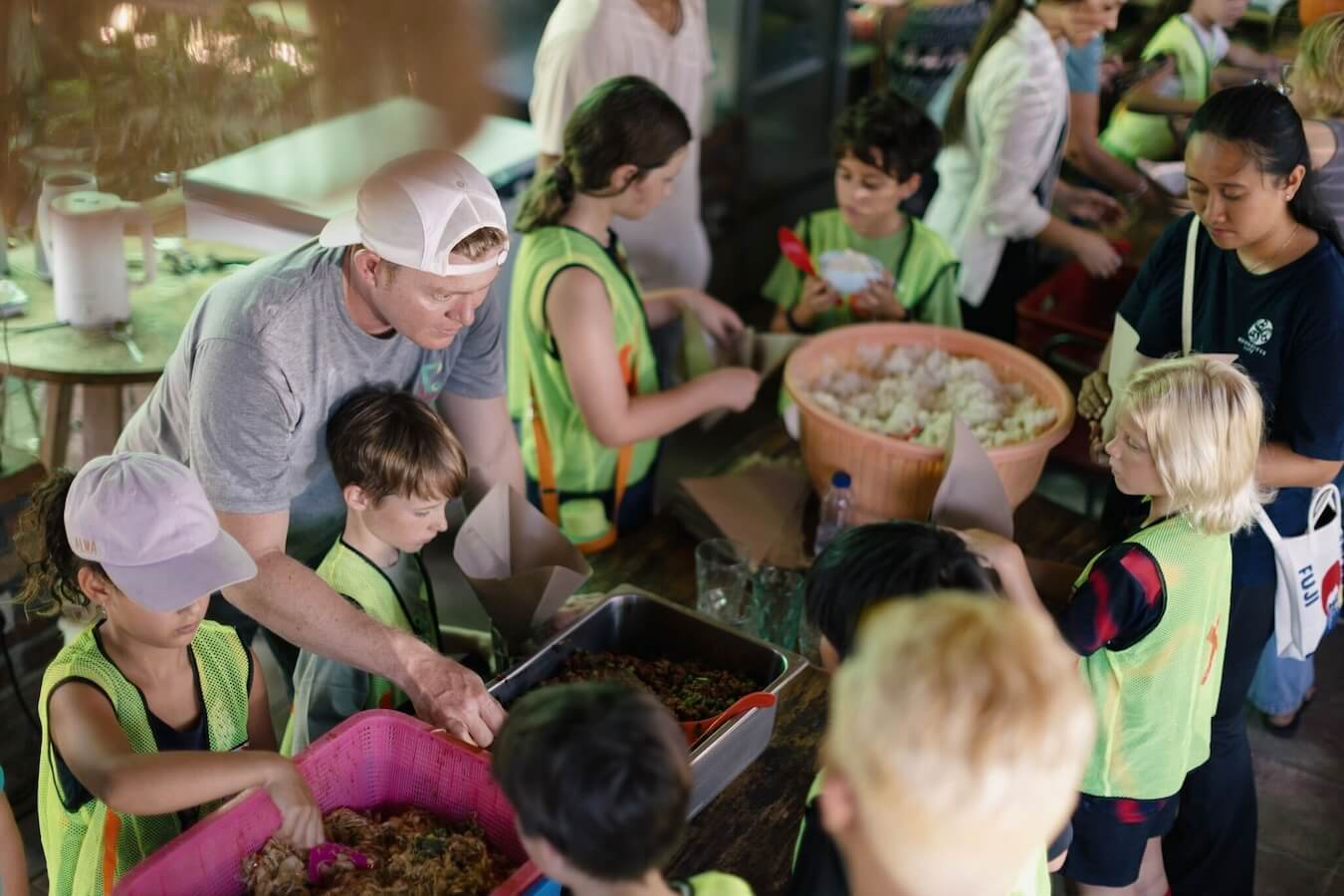
Community
What Boundless Life has undeniably reimagined is the community aspect of worldschooling. Travel can be isolating, but it doesn’t have to be. In Boundless cohorts, friendships form not only among kids but among parents, often spanning continents and lasting well beyond the program.
We’ve witnessed families from 30 different countries come together in one Boundless location – a melting pot of cultures and perspectives that enriches everyone. Parents trade recipes from their home countries, kids learn games in different languages.
Moreover, Boundless integrates with local communities too – families live in town, support local businesses, and often engage in cultural exchange with neighbors. This weaving of a supportive traveling community with the local community is something that worldschoolers value immensely, and Boundless has made it a cornerstone.
Education
From an education perspective, Boundless Life’s model also responds to a common concern: ensuring consistency and quality in a worldschooling journey.
One challenge worldschooling families face is tracking academic progress, especially if they plan to re-enter traditional schools or meet state requirements. Boundless uses a curriculum framework that aims to be portable and globally relevant, while still customizable to place and student interests.
By 2025, Boundless Life has grown from an idea to multiple thriving communities across Europe, Asia, and the Americas. Families who once only dreamed of worldschooling now have the opportunity to try it in a safe and supportive environment.
Many families discover that after one cohort, they’re ready to immediately sign up for the next. In this way, Boundless is expanding the worldschooling tent, not competing with it. It’s drawing in families who might otherwise feel too daunted to ever start.
Families using Boundless Life are indeed worldschooling – their kids are learning through travel and global exposure just the same, and they’re doing it within a nurturing community. It’s simply worldschooling evolved to a new, more structured phase. And this evolution is helping bring worldschooling into the future.

The Future of Worldschooling
From its early renegade days to the diverse and dynamic movement it is now, worldschooling has taught us there is no single “right” way to raise a curious, compassionate, globally competent child.
Some kids might thrive spending their teen years sailing around the world with their family, others might prefer having a home base and worldschooling during summers. Some parents have the confidence and desire to DIY every aspect of their children’s learning, others welcome a helping hand through communities or programs. The beauty is that all these paths are valid. As long as a family is learning together, experiencing the world, and growing – they’re doing it right.
The world is always changing, and so are our kids and circumstances. Education, therefore, should be a living, breathing, adaptive construct – just like the world itself. Worldschooling, by its very nature, will continue to morph over time.
Jenny’s Advice to Potential Worldschoolers
For families considering worldschooling, the advice from those who’ve gone before is heartening. Jenny’s top tip for getting started:
Don’t feel like you have to have everything mapped out. “Just get a flight to one destination and stay there for a couple of weeks and then see how you feel and see how things unfold,” she advises. The worldschooling journey, like any journey, begins with a single step.
And as for avoiding pitfalls, Jenny cautions against the trap of Instagram perfection: “Don't fall for the influencers on TikTok and Instagram making out that every single day is absolutely incredible... realize that real life still happens when you're on the road”.
Worldschooling isn’t about being on perpetual vacation; it’s about integrating life and learning in a more fluid way. Sometimes that life is messy – and that in itself can be a learning experience for kids and parents alike, to be resilient and resourceful.
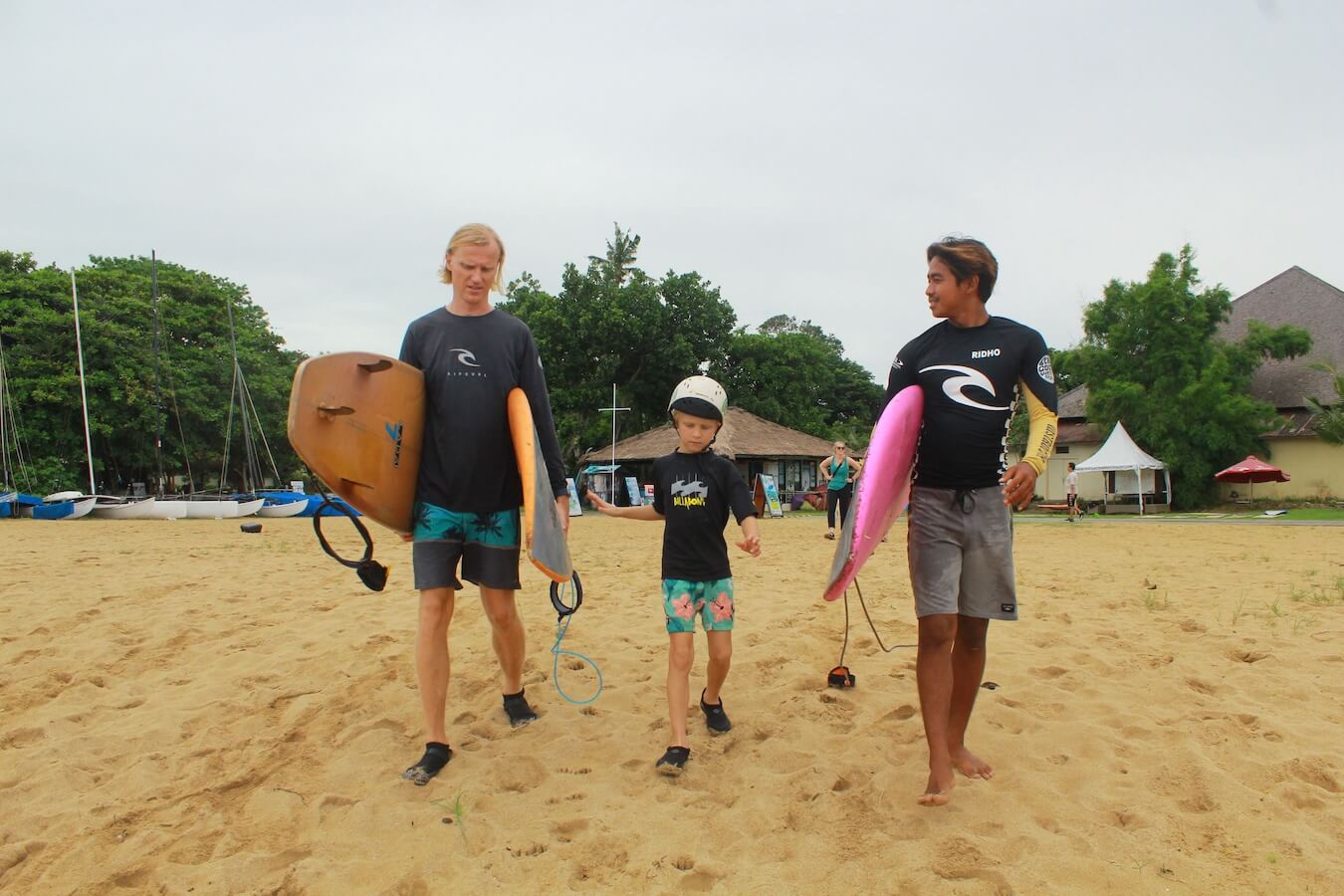
Final Thoughts on Worldschooling
In closing, we circle back to the idea that the world is changing, and education is changing with it. Worldschooling is a shining example of how families are redefining success and learning on their own terms.
Whether you choose to worldschool by backpacking solo with your kids, joining a community like Boundless Life, or simply infusing your regular life with as much travel and cultural exposure as you can – know that you’re part of a growing movement of parents saying “Yes, our kids can learn from this amazing world and not just a worksheet.”
It’s about raising children who see the world as their home, humanity as their community, and learning as a lifelong adventure. 🌍✏️





.avif)
